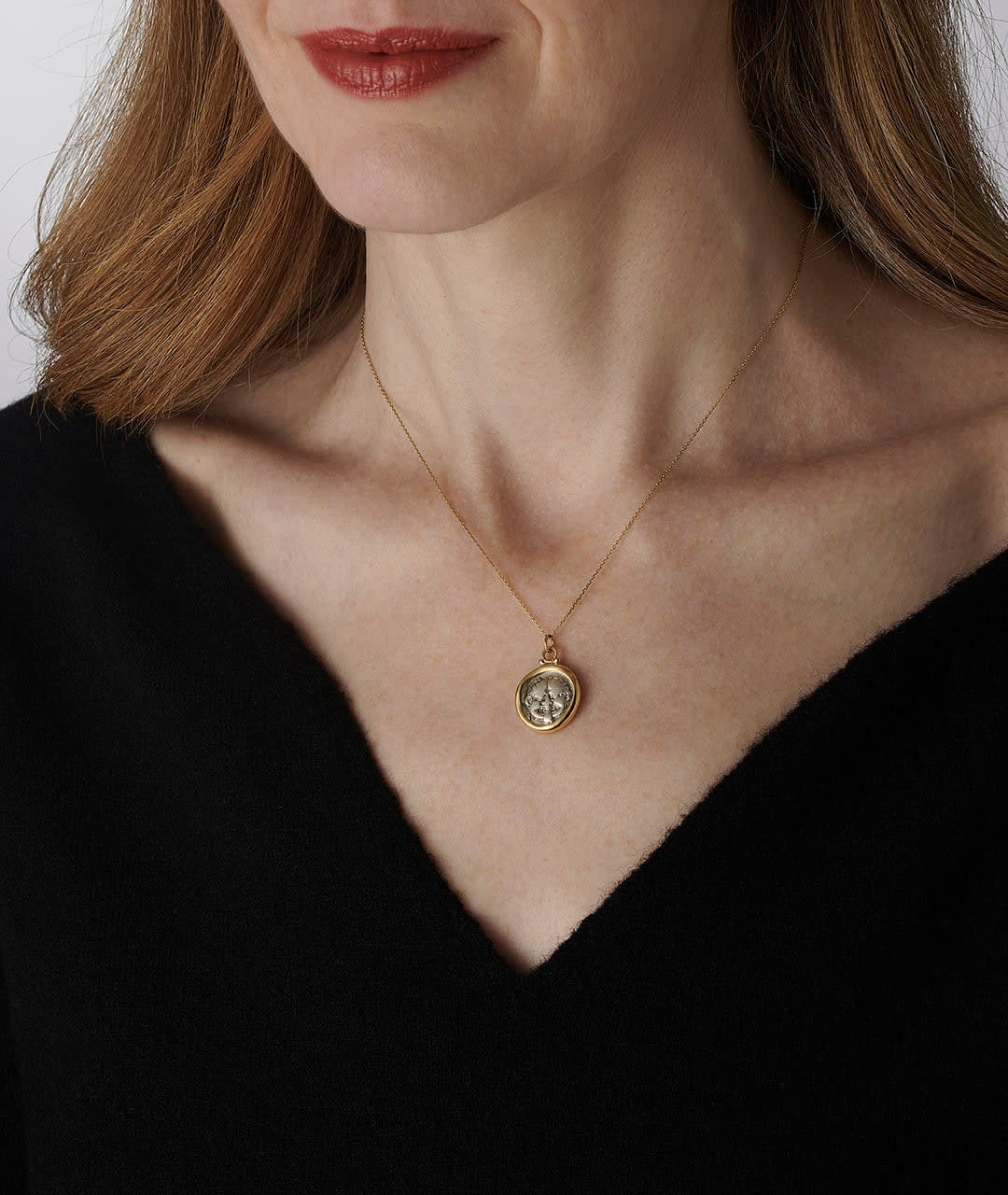




Greek
Gorgoneion silver and gold pendant, Classical Greek, circa 400 - 350 BC
Silver, gold
Width of pendant: 1.2 cm
Weight of coin: 1.77 g
Length of chain: 16 in
Weight of coin: 1.77 g
Length of chain: 16 in
Further images
An ancient silver hemidrachm of Campania, Neapolis set in a modern 18 carat gold pendant. The coin depicts an imposing facing head of a Gorgon, with a diademed head of...
An ancient silver hemidrachm of Campania, Neapolis set in a modern 18 carat gold pendant.
The coin depicts an imposing facing head of a Gorgon, with a diademed head of nymph facing to the right on the reverse.
The coin depicts an imposing facing head of a Gorgon, with a diademed head of nymph facing to the right on the reverse.
Provenance
The Reverend Richard J. Plant (1928-2020) Collection, Bawtry, South YorkshirePlant had a distinctive approach to writing about coins which arose from a life-long quest to make them accessible to collectors who lacked his own classical education. His articles and books, typically illustrated by his own meticulous hand-drawn illustrations brought coins to life - he focused on making connections to the history, myths, places, objects and people on them.
Literature
One of the earliest apotropaic devices in Ancient Greece, was the Gorgoneion, an amulet that depicted the head of a Gorgon. Because of their powerful and legendary gaze that could turn one into stone, images of Gorgons were used as objects for protection.The term Gorgoneion generally refers to the head of Medusa. According to ancient Greek myth the Greek hero Perseus defeated the snake haired Medusa and used her severed head to turn his enemies into stone. Perseus then offered her head to the goddess Athena who used it as an emblem of power and protection.
The Gorgoneion was a prolific symbol in the ancient world and appears not just on coinage, but also architecture, vase painting and sculpture. One of the earliest, and perhaps the most spectacular example in Classical sculpture, is from the Temple of Artemis on Corfu, where a terrifying image of the Gorgon is depicted flanked by two leopards.




